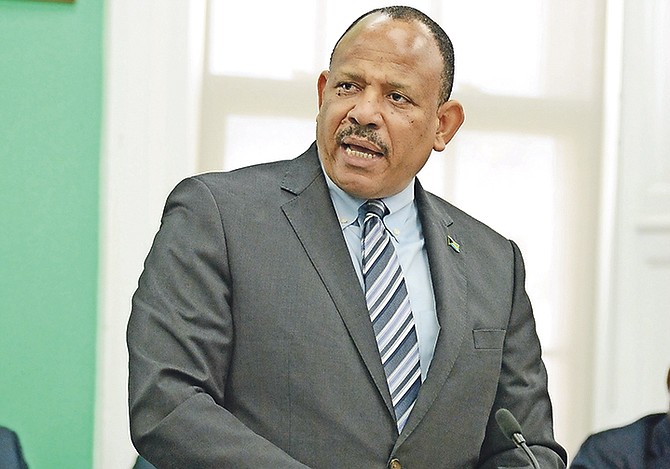By KHRISNA RUSSELL
Deputy Chief Reporter
krussell@tribunemedia.net
AT least two cases of swine flu resulting in one death have been documented in the country and it is possible there could be more but officials are unable to say for certain, Health Minister Dr Duane Sands said yesterday.
While both cases of the illness were documented at Doctors Hospital, he said it is not common practise for public sector facilities to do viral testing, which is how the H1N1 virus is detected.
This is because viral tests are more expensive when compared to bacterial testing, the most used test type in the government health sector.
In the House of Assembly on Wednesday, Dr Sands revealed swine flu cases had been reported and implored residents to take advantage of free flu vaccines available at public health facilities across the country.
But despite no out-of-pocket cost for the flu shot, officials know that Bahamians are not getting vaccinated as they should. Dr Sands said a “significant” amount of nearly 20,000 doses of the shot provided each year go to waste.
As receiving the shot is the only way to safeguard against contracting the swine flu, Dr Sands strongly urged people, especially those in the high-risk category to get the shot.
Those in this category are health care workers, day care providers and school teachers, children between six months and five years old, the elderly, persons with chronic, non-communicable diseases, women who will be pregnant during flu season and obese persons.
“In The Bahamas the challenge that we have in persons who develop pneumonia is identifying the culprit organism because sometimes we just call it pneumonia and some of the people that have influenza virus have superimposed bacterial pneumonia on top of it but what killed them was influenza,” Dr Sands explained yesterday. “So when we look at the capacity in our healthcare system, most of the cases reported of documented influenza comes out of the private sector and particularly Doctors Hospital.
“Why? Because they check and because it’s expensive to check.
“So when you start doing viral tests they are more expensive than doing bacterial tests. It is very likely, and this is something that we discussed at our technical meeting a week ago, that we are underestimating the number of persons who are infected and who die from flu in The Bahamas because we are simply not testing in the public sector.
“Now some would say ‘oh why don’t you do so?’ When you have all of the these people that show up with the cold or the flu or whatever and you ask whether or not we should test them for influenza you are talking about a pretty expensive proposition.”
He continued: “Because in the private sector we check for it, in the public sector we don’t.
“There are rare occasions when we have checked for it in the public sector but as a rule we check more often in the private sector than in the public sector.
“The fact that we now know that we have had at least two H1N1 cases is because at Doctors Hospital they checked for it. It doesn’t mean that we haven’t had H1N1 cases at Princess Margaret (Hospital) or at the Rand (Memorial Hospital).
“All it means is that at Doctors, we documented that that’s what it was and so given the fact that it is unlikely that people with flu are only people with insurance, are the only people with means, are the only people who go private then a reasonable assumption is there are more cases, but we have not documented them.
“And when you now get into the question of should we be testing all of these people, it’s an interesting public policy question but the better approach is to avail yourself of a preventative strategy, reduce or eliminate the risk of developing influenza by getting the flu shot.”
During the 2009-2010 swine flu epidemic, 59 million Americans were thought to have caught the swine flu that first appeared in the spring, but only about 12,000 died.
That flu, an H1N1 strain, was called “swine flu,” despite the objections of the pork industry, because it emerged in a pig-farming region of Mexico and was the first human flu virus to contain genes from both North American and Eurasian pig flues.





Comments
Use the comment form below to begin a discussion about this content.
Sign in to comment
Or login with:
OpenID